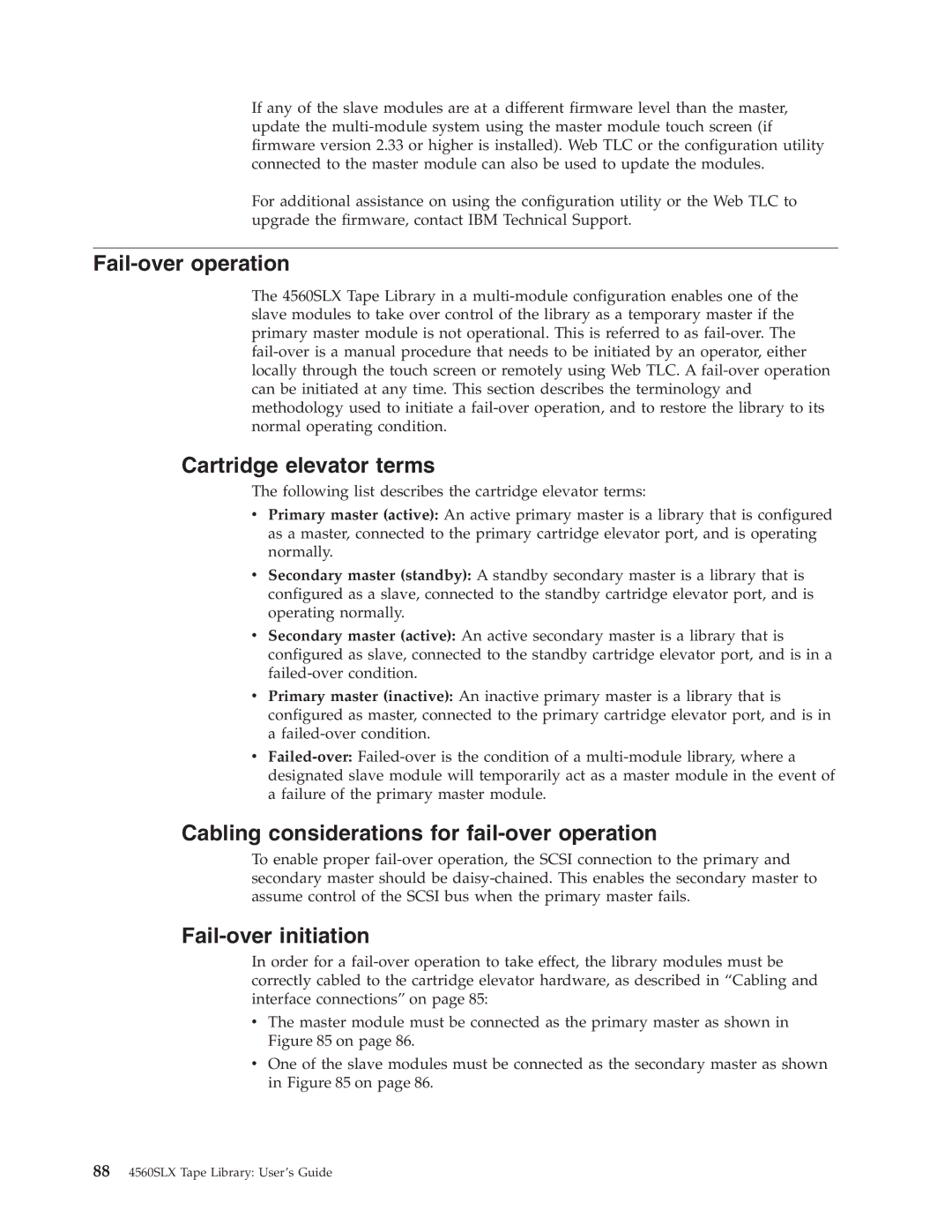If any of the slave modules are at a different firmware level than the master, update the
For additional assistance on using the configuration utility or the Web TLC to upgrade the firmware, contact IBM Technical Support.
Fail-over operation
The 4560SLX Tape Library in a
Cartridge elevator terms
The following list describes the cartridge elevator terms:
vPrimary master (active): An active primary master is a library that is configured as a master, connected to the primary cartridge elevator port, and is operating normally.
vSecondary master (standby): A standby secondary master is a library that is configured as a slave, connected to the standby cartridge elevator port, and is operating normally.
vSecondary master (active): An active secondary master is a library that is configured as slave, connected to the standby cartridge elevator port, and is in a
vPrimary master (inactive): An inactive primary master is a library that is configured as master, connected to the primary cartridge elevator port, and is in a
v
Cabling considerations for fail-over operation
To enable proper
Fail-over initiation
In order for a
vThe master module must be connected as the primary master as shown in Figure 85 on page 86.
vOne of the slave modules must be connected as the secondary master as shown in Figure 85 on page 86.
884560SLX Tape Library: User’s Guide
